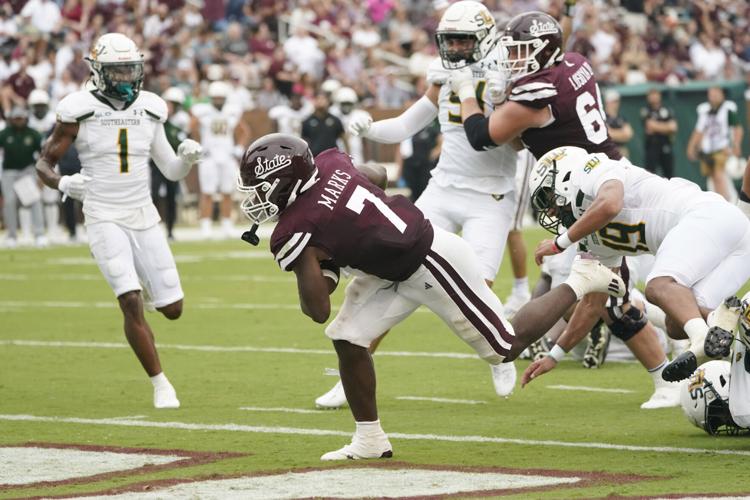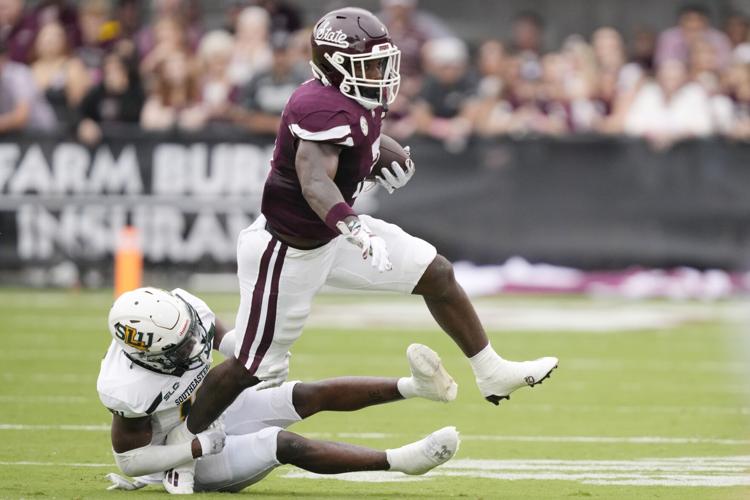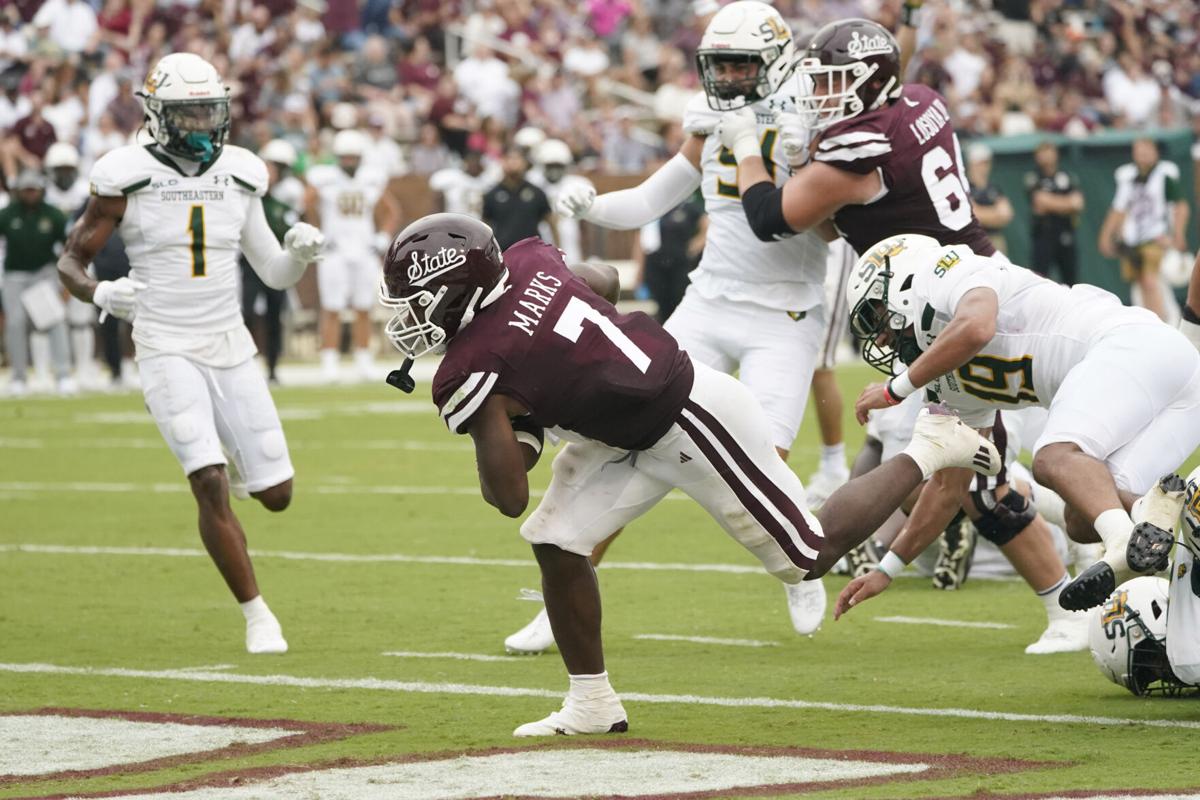Arizona faced Mississippi State a year ago, so you’d think that would aid the Wildcats in their preparation for Saturday’s game in Starkville.
On one side of the ball, it’s undoubtedly helpful. Although he has a different role now at MSU, this is still Zach Arnett’s defense.
On the other side of the ball? You might as well toss that film into the recycling bin.
When the Cats hosted the Bulldogs in September 2022, Mike Leach was their coach. They ran his O.G. version of the “Air Raid” offense with typical precision and efficiency in a 39-17 victory.
Later in the season, Leach’s health turned for the worse. One of college football’s most innovative coaches and singular personalities died Dec. 12, between the end of MSU's regular season and its bowl game.
Arnett was Leach’s defensive coordinator. He’s now MSU’s head coach. He hired Kevin Barbay as offensive coordinator. The Bulldogs’ offense has undergone a dramatic transformation.
“Totally different,” UA defensive coordinator Johnny Nansen said.
How different? In what ways? That’s what we’re going to examine in the season premiere of “Cats Stats.”

We have only one game to go on so far, so it’s the smallest sample size possible, but in their opener against Southeastern Louisiana, the Bulldogs did something they never did in three seasons under Leach:
They ran the ball more than they threw it.
MSU had 39 rushing attempts in Week 1. Quarterback Will Rogers attempted 29 passes.
In Leach’s 36 games as their head coach, the Bulldogs had more pass attempts than run attempts — usually way more — in all but one game. In the 2020 Armed Forces Bowl vs. Tulsa, MSU had 30 of each — which on its own could be a worthy subject for a “30 for 30” given Leach’s proclivity for passing.
Even in the first game they played without him, the ReliaQuest Bowl vs. Illinois, the Bulldogs paid homage to Leach by passing the ball more than twice as much as they ran it — 45-22. That was a typical ratio under “The Pirate.”
MSU led the nation in passing attempts in each of Leach’s three seasons (2020-22). The Bulldogs averaged 51.2 passing attempts per game and 20.8 rushing attempts per game.
It’s actually more extreme than those numbers suggest.
The NCAA still classifies sacks as rushing attempts, even though the former, by definition, occur on passing plays. So if we slide MSU’s sacks allowed from the rushing column to the passing column, the ratio becomes 53.8 to 18.2 — nearly three to one.
Before this past Saturday, Rogers never had attempted fewer than 30 passes in a game since becoming the Bulldogs’ full-time quarterback partway through the 2020 season. He’s had 40 or more 25 times, including 15 games with 50 or more — and four with 60 or more!
Leach did what he did because, more often than not, it worked. He had a career winning percentage of .596 at Texas Tech, Washington State and Mississippi State, leading those programs — not exactly college football bluebloods — to 17 bowl berths in 21 seasons.
Whether down big, up big or somewhere in between, Leach threw the rock. MSU had the second-most passing attempts (153) in the nation last year when winning by 15-plus points, per CFBStats.com. Georgia was No. 1 with 173 — presumably because the two-time national champs were winning by 15-plus points a lot.

Mississippi State quarterback Will Rogers, shown calling a timeout in last year's game against Arizona in Tucson, had his fewest passing attempts as MSU's full-time starter in the Bulldogs' opener vs. Southeastern Louisiana.
Last year’s game in Tucson was classic Leach. MSU had 49 passing attempts and 24 rushing attempts. Adjusted for sacks, those numbers were 51 and 22.
The Bulldogs actually had 30-plus rushing attempts three times last season, a high mark during Leach’s tenure. Each of the previous two seasons, they had only one.
MSU’s top rushing total under Leach was 162 yards last year vs. Arkansas, a game the Bulldogs won 40-17. They had 151 yards in a 51-32 win over Missouri in 2020.
MSU nearly doubled that figure last week vs. Southeastern Louisiana, gaining 298 yards on the ground — including 127 by Jo'quavious Marks, a career high. The Bulldogs weren’t just committed to the run, they were effective at it. They will present a bold test for the Wildcats’ rebuilt defensive front, which limited NAU to 1.9 yards per rushing attempt last week.
Arizona also will have to be wary of play-action passing, which isn’t a staple of the Air Raid attack. Rogers had only 41 pass attempts off of play-action fakes last season, per Pro Football Focus, or 3.2 per game. That included a 2-for-3, 10-yard performance vs. the Wildcats.
Rogers was 8 of 11 when using play-action against Southeastern Louisiana, according to PFF. Those plays gained 90 yards and produced both of his passing touchdowns.
Rogers’ passing chart — how far he chucked the ball on each attempt — also illustrates how much the offense has changed.
Against Arizona last year, Rogers threw nine passes behind the line of scrimmage and 30 between 0 and 9 yards, per PFF. Seven traveled between 10 and 19 yards, and only one was thrown 20-plus yards downfield. Rogers completed 30 of the 39 passes thrown less than 10 yards. They gained 276 yards and produced four touchdowns. It was death by a thousand papercuts for the UA defense.
In all, 83% of Rogers’ passes vs. the Wildcats were under that threshold of 10 air yards. In last week’s opener, that figure fell to 69.2%.

Mississippi State running back Jo'Quavious Marks, right, had 19 of the Bulldogs' 39 rushing attempts vs. Southeastern Louisiana. MSU ran the ball more than it passed vs. the Lions, something that never happened under the late Mike Leach.
MSU also has reintroduced the tight end under Barbay. The Bulldogs didn’t use a tight end for a single snap in Tucson. Two combined for 70 snaps last week.
None of this is to say one method of moving the ball is better than the other.
Leach tormented Arizona over the years, including a 69-7 walloping at Washington State in 2016. The Bulldogs’ new approach might prove to be more effective. It might not.
This much is certain: The offense, by every measure, is totally different.
Games at Davis Wade Stadium, home of the Mississippi State Bulldogs, get rowdy from the thousands of cowbells rattling from MSU fans. The Arizona Wildcats are preparing for the noise factor in Starkville by piping in cowbell noise during their practices. Video by Justin Spears / Arizona Daily Star








